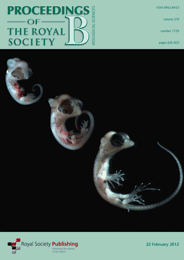
从可爱的大胡子皇娟毛猴(图11),到长相凶恶且秃顶的秃猴(图1),生活在南美洲的灵长类动物的面孔在形状和颜色上都各不相同。
在这些差异中,有些能够给动物们提供适应性优势。例如,在伪装方面,棕色的皮毛要比白色强得多。不过,很多猴子的面孔模式非常复杂,并且会有多种颜色构成。
运用面部识别软件,研究人员描绘出了新大陆猴中129个猴种的面孔,并根据面部颜色的复杂性进行了排序。
随后,研究人员寻找到灵长类动物生活习惯的模式,并在1月10日的英国《皇家学会学报B辑》杂志上提出了一个假说:生活在小群体中或者独自行动的猴子倾向于拥有更为复杂的面孔,而那些生活在较大群体中的猴子,其面孔要简单得多。
原因可能是面部拥有多种颜色的猴子,诸如蜘蛛猿(图3),更容易引起彼此间的注意,从而使某个个体能快速地在同一个种群中认出对方,因为它们相互间的此类交流可能太少了,且相距很远。
而接下来的研究则会集中在猴子们能否快速地识别那些亮红色或者鲜蓝色的臀部皮肤这个问题上。

Adaptive evolution of facial colour patterns in Neotropical primates
Sharlene E. Santana, Jessica Lynch Alfaro and Michael E. Alfaro
The rich diversity of primate faces has interested naturalists for over a century. Researchers have long proposed that social behaviours have shaped the evolution of primate facial diversity. However, the primate face constitutes a unique structure where the diverse and potentially competing functions of communication, ecology and physiology intersect, and the major determinants of facial diversity remain poorly understood. Here, we provide the first evidence for an adaptive role of facial colour patterns and pigmentation within Neotropical primates. Consistent with the hypothesis that facial patterns function in communication and species recognition, we find that species living in smaller groups and in sympatry with a higher number of congener species have evolved more complex patterns of facial colour. The evolution of facial pigmentation and hair length is linked to ecological factors, and ecogeographical rules related to UV radiation and thermoregulation are met by some facial regions. Our results demonstrate the interaction of behavioural and ecological factors in shaping one of the most outstanding facial diversities of any mammalian lineage.
文献链接:https://rspb.royalsocietypublishing.org/content/early/2012/01/11/rspb.2011.2326








